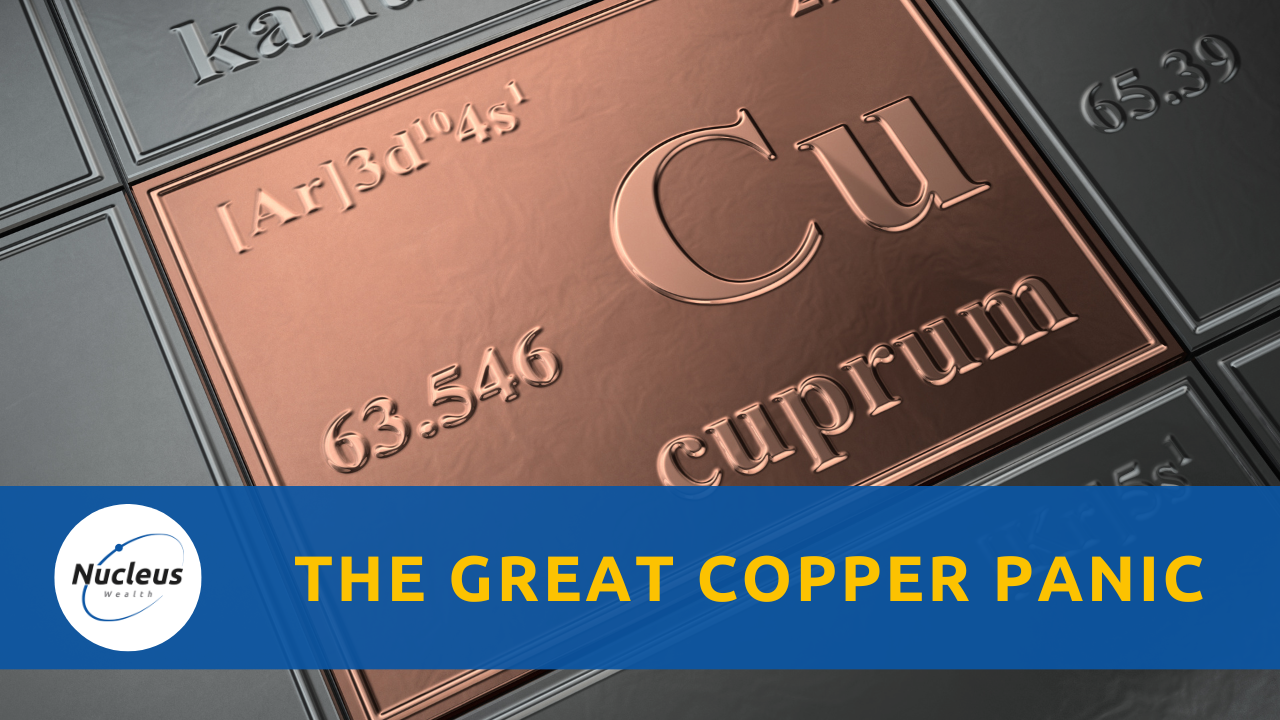The greatest ever copper trade
Bloomberg is out this week talking about the "once-in-a-generation trade" in the copper market:
The Aug. 1 deadline for Trump's 50% copper tariffs signals the endgame for the most profitable trade that industry veterans say they have ever seen...And the traders were only getting started. Trump’s probe fired the starting gun on a massive movement of metal that has redrawn the global market, as surging US prices made it hugely profitable to ship copper into the country — at least until the tariffs arrive. Some traders describe deals yielding more than $1,000 on every ton of copper, an unprecedented sum in an industry where a good trade rarely nets $100...
The arbitrage trade has sucked hundreds of thousands of tons into US ports, some of which is now piling up outdoors on wharves along the Gulf Coast as traders hunt for space in bulging warehouses.
Lots to unpack there. The short version is that for months, traders have been diverting copper shipments from China (and other countries) to stockpile the copper in warehouses in the US. Basically, it was a bet on a tariff many thought would be 20%ish. Because it looks like being 50%, traders will make way more than they thought.Spreads between the US and Europe have blown out:
A few thoughts:
- Financial markets are some of the most efficient social constructs humankind has ever developed to regulate the supply of goods to the right market at the right time using the profit motive.
- This is a horrendous example of the aforementioned efficiency. It is an example of traders screwing the system, making hundreds of millions of dollars that will be paid for by consumers.
- It has pushed up prices in the rest of the world and the US, as there was a mad rush to buy copper. The only purpose being to store it and then resell it.
- When the tariffs kick in, much of the price action will unwind. The US will stop buying copper for months while it works through its inventories. The rest of the world will go from not having enough copper (because traders are buying it to store it in the US) to having too much as the US stops buying.
Get ready to be sold to
The traders need someone to take the other side of this trade in order to get out. They would like that person to be you! Expect a wave of newspaper articles and reports talking about how much copper has gone up, how much copper the green revolution needs, how much more copper EVs use, and how you missed your chance - you must buy right now.
Don't be fooled. The people in the trade need to sell to someone.
Appendix: Copper Myths to bust
There are grains of truth at the heart of most of the positive trends in copper use. But, there is way too much exaggeration.
1. EVs use 3-4x more copper than combustion engines
It is true that electric vehicles "can" use 3-4x more copper. It is unlikely that they will.
Permanent magnet motors use 3-6kg of copper. Induction motors use 11-24kg. 90% of EV motors currently are permanent magnet. To get to "3-4x" you will need to assume an induction motor. And probably at the high end of the range. Similar maths work in the battery. About 25kg more copper seems more likely:

If every car produced were an EV by 2040, 2.5Mt more copper would be needed. If copper production grows by about 0.5% per annum, that will cover the extra needed.
2. Copper use is growing
Per capita? No. Population growth is doing all of the lifting

3. Green grids need lots of copper
Yes. But grids don't use that much copper overall. Even the most bullish forecasts will need about 1.5% more copper per annum to meet demand.
Second, more aluminium may get used instead of copper, particularly for overhead lines. Aluminium is much cheaper and lighter but a worse conductor. The IEA looks at scenarios where copper usage barely changes because of switching from copper to aluminium. Not a base case, but a risk case.
Finally, grid-related forecasts assume a bigger grid with more connections. If the grid devolves to more local energy storage and local generation, it is possible that this category could consume less copper. A good analogy is the telephone. Developed countries set up copper-based phone networks, but many emerging markets skipped straight to mobile networks. Could some markets do the same with energy? Not sure if it is a base case, but I certainly wouldn't rule it out.
Investor exposure
If you are looking to play the copper market, presumably after the current mania subsides, then you can use the Nucleus tilts to add extra copper stocks to your portfolio:







